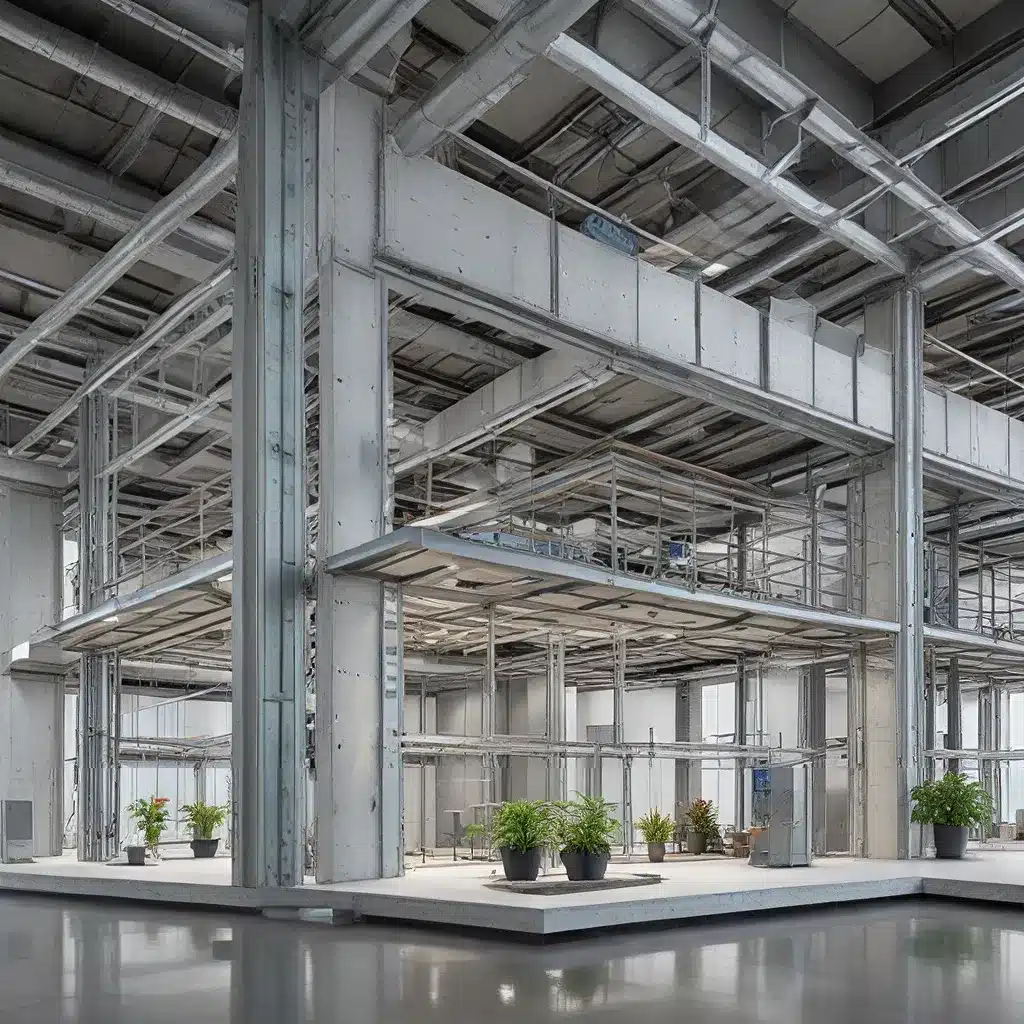
The Evolving Landscape of Sensor Technologies in AEC
The Architecture, Engineering, and Construction (AEC) industry is undergoing a profound transformation, driven by the rapid evolution of sensor technologies. These advancements present unprecedented opportunities for heightened monitoring and control throughout the entire project lifecycle, from planning and construction to ongoing operations and maintenance.
One of the key areas where sensor technologies are making a significant impact is in the realm of building health monitoring. By integrating a diverse array of sensors, AEC professionals can now gather comprehensive data on the structural integrity, environmental conditions, and occupant safety of buildings, enabling them to make informed decisions and proactively address potential issues.
Sensor Fusion for Comprehensive Building Monitoring
At the core of this transformation is the concept of sensor fusion, where multiple sensor types are strategically combined to create a holistic understanding of a building’s performance and condition. This approach allows for the seamless integration of various sensor technologies, each contributing unique insights and capabilities.
LiDAR: Precise 3D Mapping and Site Monitoring
One of the cornerstone technologies in this sensor fusion ecosystem is LiDAR (Light Detection and Ranging). LiDAR sensors provide highly accurate 3D mapping of construction sites, delivering detailed information about the physical environment. This capability enables AEC professionals to enhance project planning, site management, and progress monitoring, ultimately leading to improved efficiency and decision-making.
LiDAR technology is also instrumental in evaluating structural integrity, identifying potential issues, and monitoring ongoing changes to a building’s structure. By conducting high-resolution scans, AEC teams can detect subtle deformations, cracks, or other signs of structural distress, allowing them to address problems before they escalate.
RFID: Streamlining Asset Tracking and Material Management
Another key component in the sensor fusion approach is RFID (Radio-Frequency Identification) technology. RFID tags enable real-time tracking of construction assets, materials, and equipment, providing valuable insights into logistics and supply chain management.
IoT Devices: Enabling Interconnectivity and Real-Time Data Sharing
The integration of IoT (Internet of Things) devices is another crucial component of the sensor fusion approach in building health monitoring. These interconnected sensors and devices establish a network that facilitates real-time communication and data sharing among various building systems and components.
Advanced Imaging Sensors: Evaluating Structural Integrity and Environmental Conditions
Beyond the foundational sensor technologies, the sensor fusion approach also incorporates advanced imaging sensors, such as thermal cameras and hyperspectral imaging. These sophisticated sensors play a pivotal role in assessing a building’s structural integrity and monitoring its environmental conditions.
Thermal cameras, for instance, can detect subtle temperature variations that may indicate potential issues within the building’s structure or systems. Hyperspectral imaging, on the other hand, provides a more comprehensive understanding of a building’s environmental conditions, including air quality, moisture levels, and the presence of hazardous materials.
Enhancing Structural Integrity and Occupant Safety
The synergistic integration of these diverse sensor technologies enables a comprehensive approach to building health monitoring, ultimately enhancing structural integrity and occupant safety.
Structural Integrity Monitoring
By leveraging the capabilities of LiDAR, RFID, and advanced imaging sensors, AEC professionals can closely monitor the structural health of buildings. Early detection of potential issues, such as cracks, deformations, or material degradation, allows for proactive maintenance and timely interventions, ensuring the long-term stability and safety of the built environment.
Occupant Safety and Comfort
The sensor fusion approach also addresses the critical aspect of occupant safety and comfort. IoT-enabled sensor networks can continuously monitor indoor air quality, temperature, and humidity levels, providing real-time insights that inform building management decisions. This information can be used to optimize ventilation, heating, and cooling systems, ensuring a comfortable and healthy environment for building occupants.
Moreover, the integration of thermal cameras and other advanced imaging sensors can detect potential safety hazards, such as fire risks or the presence of hazardous materials, enabling proactive mitigation strategies and enhancing overall occupant well-being.
The Path Forward: Embracing Sensor Fusion for Smarter, Safer Buildings
As the AEC industry continues to embrace the transformative power of sensor technologies, the concept of sensor fusion has emerged as a pivotal strategy for building health monitoring. By seamlessly integrating a diverse array of sensor types, AEC professionals can gather comprehensive data, make informed decisions, and drive advancements in structural integrity, occupant safety, and overall building performance.
Through the synergistic application of LiDAR, RFID, IoT devices, and advanced imaging sensors, the AEC industry is poised to enhance efficiency, reduce risks, and deliver smarter, safer, and more sustainable built environments. As the industry continues to evolve, the adoption of sensor fusion will be a critical factor in shaping the future of the AEC landscape.